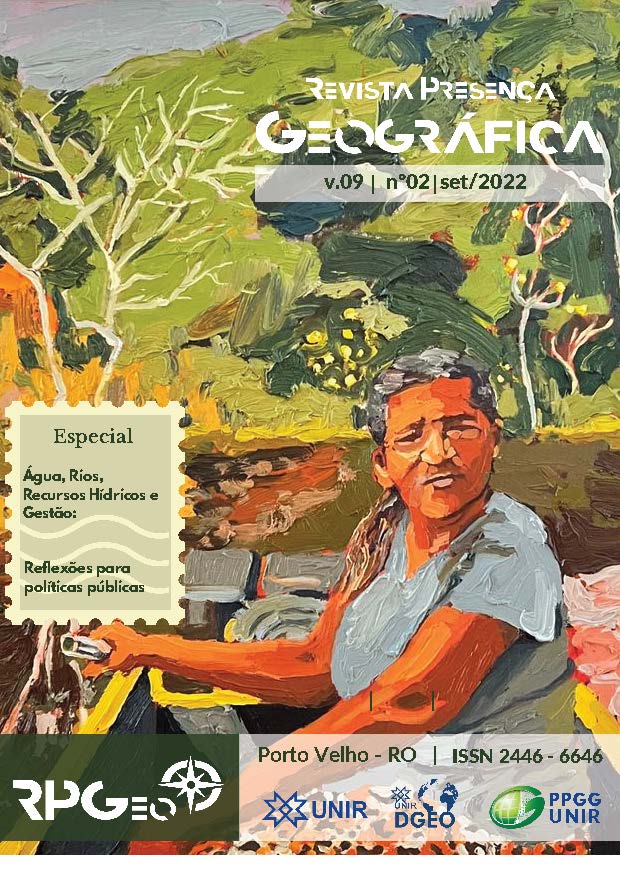THE MIGRATION OF MEANDERS IN THE JURUÁ RIVER NEIGHBORHOOD AND THE IMPLICATIONS FOR URBAN WATER MANAGEMENT IN CARAUARI/AM
DOI:
https://doi.org/10.36026/rpgeo.v9i2.7192Abstract
The riverside cities of the Amazon developed their way of life based on the characteristics of the local river dynamics, within a common context for all of them: the precarious governmental social and environmental assistance. Few or nonexistent are the works that characterize and evaluate these cities in an integrated context of life and their water resources. Thus, the present work aims to analyze the migration of meanders in a stretch of the lower Juruá river, around the headquarters of the municipality of Carauari / AM. For this purpose, images from the Landsat 5 and 8 satellites were used, in the years 1984 and 2018, in order to evaluate the changes that occurred in the course of the Juruá River for this period. The current situation of water resources in the urban area of the municipality was also assessed, highlighting the main current problems regarding sanitation conditions. The analysis of the migration of meanders showed that the section of the studied river goes through processes of expansion, rotation and translation of the meandrical curves, which caused in the study period cut of a peduncle. In terms of sanitation, the abandoned meander that originates the lake in front of the city continues to receive untreated domestic effluents from the urban area of the city, which can lead to eutrophication and physical-chemical changes in the water. Thus, there is a constant need for data production to assess, in an integrated way, the stability of water systems, with a view to understanding these environments and their behavior through human activities, especially in the most neglected areas.
Downloads
Published
Issue
Section
License
Copyright (c) 2022 Me. Josué da Silva Costa, Me. Débora da Costa Carvalho, Dr. José Camilo Ramos de Souza

This work is licensed under a Creative Commons Attribution-NonCommercial-NoDerivatives 4.0 International License.
This work is licensed under Creative Commons Attribution-NonCommercial-NoDerivatives 4.0 Internacional license.
Authors who publish in this journal agree to the following terms:
- Authors retain the copyright and grant the journal the right to first publication, with the work simultane ously licensed under Creative Commons Attribution-NonCommercial-NoDerivatives 4.0 Internacional License that allows the sharing of the work with acknowledgment of authorship and initial publication in this journal.
- Authors are authorized to assume additional contracts separately, for non-exclusive distribution of the version of the work published in this journal (ex, publishing in institutional repository or as a book chapter), with acknowledgment of authorship and initial publication in this journal.
- Authors are allowed and encouraged to publish and distribute their work online (ex.: in institutional repositories or on their personal page) at any point before or during the editorial process, as this can generate productive changes, as well as increase the impact and the citation of the published work (See The Free Acess Policy).












